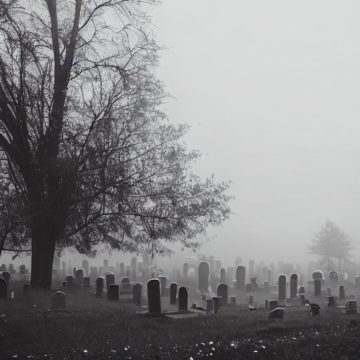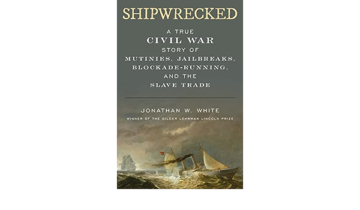Category: Recommended Reading
Leny Andrade (1943 – 2023) Jazz Singer And Musician
a feminist take on One Thousand and One Nights
Jenny Bhatt in The Guardian:
 Every creative artist knows what it is to work under a deadline, and the harshest deadline of all is presented by one’s own mortality. The quick-witted storyteller of Arabian Nights – or One Thousand and One Nights, which is preferred because several stories originated from beyond the Arab world – responded with creative ingenuity to just that predicament. It has probably inspired more translations, retellings and adaptations across cultures, generations and genres than any other text. It has influenced the works of Leo Tolstoy and Jorge Luis Borges, Marcel Proust and Salman Rushdie, Angela Carter and AS Byatt, and many more beyond the western canon.
Every creative artist knows what it is to work under a deadline, and the harshest deadline of all is presented by one’s own mortality. The quick-witted storyteller of Arabian Nights – or One Thousand and One Nights, which is preferred because several stories originated from beyond the Arab world – responded with creative ingenuity to just that predicament. It has probably inspired more translations, retellings and adaptations across cultures, generations and genres than any other text. It has influenced the works of Leo Tolstoy and Jorge Luis Borges, Marcel Proust and Salman Rushdie, Angela Carter and AS Byatt, and many more beyond the western canon.
Each new version seeks to do something different for its readership in terms of outright entertainment, literary craft, aesthetic pleasure and historical revisionism. Some succeed on some of those levels, but it is rare to find a rendition that, quite breathtakingly, comes close to doing it all. The last such work was a translation by Yasmin Seale – the only female translator of this text – who finally gave us a version without the orientalism, racism and sexism. Every Rising Sun, a novelised adaptation by Jamila Ahmed, continues what Seale began. A scholar of medieval Islamic history, Ahmed also adds historical context to her debut work.
More here.
Saturday, August 5, 2023
How Misreading Adam Smith Helped Spawn Deaths of Despair
 Angus Deaton in Boston Review:
Angus Deaton in Boston Review:
One of the many pleasures of being a Scottish economist is being able to acknowledge Adam Smith as a predecessor. Smith was one of Scotland’s greatest thinkers in both economics and philosophy. I grew up in Edinburgh and was brought up to recognize Scots’ many achievements but was never told about Smith. Many years later, when I was inducted into the Royal Society of Edinburgh, Smith was mentioned, but only as a conveniently placed friend of the Duke of Buccleuch who helped the Society obtain its Royal Charter—that is, as a sort of well-connected lobbyist. Smith and David Hume were internationally renowned in their lifetime; the mathematician Michael Atiyah notes that their fame induced Benjamin Franklin in 1771 “to undertake the lengthy and tiresome journey by stagecoach to a small, cold, city on the northern fringes of civilization,” but Smith’s fame seems to have waned with time, at least at home.
Smith was not only a great thinker but also a great writer. He was an empirical economist whose sketchy data were more often right than wrong; he was skeptical, especially about wealth; and he was a balanced and humane thinker who cared about justice, noting how much more important it was than beneficence. But the story I want to tell is about economic failure and about economics failure, and about how Smith’s insights and humanity need to be brought back into the mainstream of economics. Much of the evidence that I use draws on my work with Anne Case as well as her work with Lucy Kraftman on Scotland in relation to the rest of the UK.
More here.
Large language models for economic research: Four key questions
 Elliott Ash and Stephen Hansen in VoxEU:
Elliott Ash and Stephen Hansen in VoxEU:
Public awareness about the possibilities of large language models (LLMs) to perform complex tasks and generate life-like interactions has exploded in the past year. This has led to an immense amount of media attention and policy debate about their impact on the economy and on society (Ilzetski and Jain 2023). In this column, we focus on the potential role of LLMs as a research tool for economists using text data in their research. We first lay out some key concepts needed to understand how such models are built, and then pose four key questions that we believe need to be addressed when considering the integration of LLMs into the research process. For further details, we refer readers to our recent review article on text algorithms in economics (Ash and Hansen 2023).
Large language models are essentially predictive models for sequential data. Given an input sequence of text, they can be targeted towards predicting randomly deleted words – akin to filling in gaps in a time series – or the most likely subsequent word, mirroring the process of forecasting the next data point in a time series. Consider predicting the word that underlies [MASK] in the following sentences:
- As a leading firm in the [MASK] sector, we hire highly skilled software engineers.
- As a leading firm in the [MASK] sector, we hire highly skilled petroleum engineers.
Most humans would predict that the word underlying [MASK] in the first sentence relates to technology, and that the word underlying [MASK] in the second sentence relates to energy. The key words informing these predictions are ‘software’ and ‘petroleum’, respectively. Humans intuitively know which are the important words in the sequence they must pay attention to in order to make accurate forecasts. Moreover, these words may lie relatively far from the target word to predict, as in the above examples.
More here.
Pier Paolo Pasolini’s Eye
 T. J. Clark in The Nation:
T. J. Clark in The Nation:
What goes into the making of a movie? By “movie,” in Pasolini’s case, I take it that we mean a distinctive, unprecedented, unforgettable way of seeing, in which the world is turned toward us and shown in a new light. And the new light is not merely glittering and irresistible (though in Pasolini it is regularly both) but necessary. Necessary to its subject: in this instance, in the films Pasolini made in the early 1960s, the face and temper and desperation—the disintegrating identity—of the proletariat as the long epic of class struggle drew to an end.
What goes into such a moment of form—such a making of a style? I summon up a memory from near the beginning of Accattone, whose opening sequences are stamped on my mind—or his choice of distance between moving face and moving camera, his unforgiving lighting, his shallow depth of focus, the brittle staccato of his soundtrack. Start almost anywhere in these early movies, or in the scenes from Fellini’s Notte di Cabiria where Pasolini’s imprint is unmistakable; open a page at random in The Ragazzi or A Violent Life or A Night on the Tram; and immediately you are in a working-class world that very few others have touched. A savage and absolute grandeur greets you, tinged with (undercut by) bitterness and compassion, and above all by a determination to destroy—at last, in agony, against one’s own deepest wishes—the great myth of the 20th century.
English-speaking readers have been told the story of Pasolini’s life many times, and often very well.
More here.
Zombie Economy
 Ho-Fung Hung in Sidecar:
Ho-Fung Hung in Sidecar:
In the early 2010s, the economist Justin Lin Yifu, a former World Bank chief official with ties to the Chinese government, predicted that China’s economy would have at least two more decades of growth above 8%. He reckoned that since the country’s per capita income at that time was about the same level as Japan’s in the 1950s and South Korea’s and Taiwan’s in the 1970s, there was no reason China could not replicate the erstwhile successes of these other East Asian states. Lin’s optimism was echoed by the Western commentariat. The Economist projected that China would become the world’s biggest economy by 2018, surpassing the United States. Others fantasized that the Communist Party would embark on an ambitious programme of political liberalization. The New York Times’s Nicholas Kristof wrote in 2013 that Xi would ‘spearhead a resurgence of economic reform, and probably some political easing as well. Mao’s body will be hauled out of Tiananmen Square on his watch. Liu Xiaobo, the Nobel Peace Prize-winning writer, will be released from prison’. The political scientist Edward Steinfeld likewise argued in 2010 that China’s embrace of globalization would kickstart a process of ‘self-obsolescing authoritarianism’ resembling that of Taiwan in the 1980s and 90s.
Ten years later, the naivety of these forecasts is apparent. Even before the onset of Covid-19, the Chinese economy had slowed down and entered a domestic debt crisis, visible in the collapse of major real estate developers like Evergrande. After Beijing lifted all pandemic restrictions in late 2022, a widely anticipated economic rebound failed to materialize.
More here. Also see this piece by Michael Pettis from a decade ago.
AI And Accelerationism With Marc Andreessen
Inanna/Ishtar
Emily H Wilson at The Guardian:
 Inanna is remarkably little known these days, but at the dawn of civilisation, she was vastly important. She went on to become Ishtar, who is more widely recognised, and then aspects of her character were incorporated into the goddesses Aphrodite and Venus. Of all the deities, she is arguably the one who has lived the longest.
Inanna is remarkably little known these days, but at the dawn of civilisation, she was vastly important. She went on to become Ishtar, who is more widely recognised, and then aspects of her character were incorporated into the goddesses Aphrodite and Venus. Of all the deities, she is arguably the one who has lived the longest.
I first became interested in Inanna while rereading the Epic of Gilgamesh. She is something of a baddie in the story, throwing a massive sulk when Gilgamesh refuses to marry her. But what an interesting and unusual creature she is, even glimpsed sideways, in a story about the man who spurned her. Somehow, on earlier readings, I had failed to clock her magnificence.
It was then that I researched the myths in which Inanna is a central figure. There’s the story of her descent into the underworld, for example, which leads to her horrifying death and subsequent resurrection.
more here.
The Sea Captain Who Ran From Abraham Lincoln
Dorothy Wickenden at the New York Times:
 Who was Appleton Oaksmith? One contemporary described him as a “good seaman, & a bold & daring officer.” His enemies, President Abraham Lincoln among them, judged him a scoundrel and a traitor. Oaksmith, writing six years after the Civil War, wasn’t sure what to think: “I look upon myself sometimes with a sort of doubt as to my own identity.”
Who was Appleton Oaksmith? One contemporary described him as a “good seaman, & a bold & daring officer.” His enemies, President Abraham Lincoln among them, judged him a scoundrel and a traitor. Oaksmith, writing six years after the Civil War, wasn’t sure what to think: “I look upon myself sometimes with a sort of doubt as to my own identity.”
Jonathan W. White, a prizewinning Civil War historian, finds in Oaksmith’s spectacularly misguided life both a gripping yarn set far from the battlefields and a way to dramatize Lincoln’s determination to eliminate the African slave trade.
As a young seafaring adventurer in the 1850s, Oaksmith armed mercenaries in Nicaragua and joined the liberation movement in Cuba. In 1859, he started a magazine, which foundered and left him bankrupt. As a Tammany Hall Democrat, he attempted to broker a misbegotten agreement between North and South. After Lincoln took office, in 1861, Oaksmith became a shipping agent, outfitting old whaling ships.
more here.
Uplifting Climate Change Good News — According To Al Gore
From GoodGoodGood.co:
 Former U.S. Vice President Al Gore has been a huge player in the fight against climate change for as long as most of us can remember. As the founder and current chair of the Climate Reality Project, he has dedicated his life to climate action. And he says we have a lot to celebrate. Gore took the stage at the TED Countdown Summit in Detroit, Michigan this week to speak to the progress — and required action — in the climate movement.
Former U.S. Vice President Al Gore has been a huge player in the fight against climate change for as long as most of us can remember. As the founder and current chair of the Climate Reality Project, he has dedicated his life to climate action. And he says we have a lot to celebrate. Gore took the stage at the TED Countdown Summit in Detroit, Michigan this week to speak to the progress — and required action — in the climate movement.
…“The most important question these days is: How can we speed up solutions to the climate crisis? I’m convinced we are going to solve the climate crisis; we’ve got this,” Gore begins his talk. “The question remains: Will we solve it in time?” With a clock that seems to tick more rapidly (and loudly) than ever, Gore keeps us grounded in the truth: The climate crisis demands action — and we’re moving forward. “Obviously, the crisis has to be addressed,” he said. “The good news is… we are seeing tremendous progress.”
…As Gore reminds us, in August 2022, the United States passed the Inflation Reduction Act: A historic piece of legislation that will invest an estimated $1.2 trillion in climate action. The bill includes a variety of clean energy, climate mitigation and resilience, agriculture, and conservation-related programs and is the largest (and best!) federal climate policy the country has ever seen.
More here.
Helen of Troy Real—Not a Myth
Ruby Blondell in Lapham’s Quarterly:
 Like her patron goddess, Venus, Helen of Troy represents, in Goethe’s famous phrase, the “eternal feminine.” She pervades the broader discourse of beauty culture in the early twentieth century. A newspaper article from 1916 informs us that an artist named Ray van Buren studied “the beauty of Helen as delineated in the finest Greek friezes and sculptures,” before extolling the modern women who, in his view, have “the same classic, tantalizing, heart-storming beauty as the immortal Helen of Troy.” A 1926 tip for lustrous hair (involving egg whites and carbolic acid) is attributed to Helen’s “beauty recipe books.” Her name appears less often than Venus’ in early movie titles, but advertisements for beauty products often invoke the goddess and her protégée in the same breath. Sometimes they are even conflated, as if Helen had been the winner—not just a bribe—at the Judgment of Paris: “The Search for a New Helen of Troy Begins in France, [with] the Modern Judgment of Paris…to Determine Who Is Most Beautiful.”
Like her patron goddess, Venus, Helen of Troy represents, in Goethe’s famous phrase, the “eternal feminine.” She pervades the broader discourse of beauty culture in the early twentieth century. A newspaper article from 1916 informs us that an artist named Ray van Buren studied “the beauty of Helen as delineated in the finest Greek friezes and sculptures,” before extolling the modern women who, in his view, have “the same classic, tantalizing, heart-storming beauty as the immortal Helen of Troy.” A 1926 tip for lustrous hair (involving egg whites and carbolic acid) is attributed to Helen’s “beauty recipe books.” Her name appears less often than Venus’ in early movie titles, but advertisements for beauty products often invoke the goddess and her protégée in the same breath. Sometimes they are even conflated, as if Helen had been the winner—not just a bribe—at the Judgment of Paris: “The Search for a New Helen of Troy Begins in France, [with] the Modern Judgment of Paris…to Determine Who Is Most Beautiful.”
As icons of female beauty, both Helen and her patron goddess were vehicles for contemporary ambivalence about the cultural legitimacy of modern America. Many sources opine that in Hollywood Helen would be nothing in comparison with the abundance of American beauties.
More here.
Friday, August 4, 2023
On poetry and mourning
Kamran Javadizadeh in The Yale Review:
 Ninety-three days before she died, my sister sent me a message. Five and a half years earlier, Bita had been diagnosed with stage four intrahepatic cholangiocarcinoma, a rare and deadly form of cancer. She was forty-three. There was a thirteen-centimeter mass—roughly the size of a grapefruit—in her liver. When the radiologist friend who’d helped get Bita into Memorial Sloan Kettering Cancer Center saw me in the hospital corridor after her diagnosis, he burst into tears.
Ninety-three days before she died, my sister sent me a message. Five and a half years earlier, Bita had been diagnosed with stage four intrahepatic cholangiocarcinoma, a rare and deadly form of cancer. She was forty-three. There was a thirteen-centimeter mass—roughly the size of a grapefruit—in her liver. When the radiologist friend who’d helped get Bita into Memorial Sloan Kettering Cancer Center saw me in the hospital corridor after her diagnosis, he burst into tears.
Bita had been in treatment ever since; I had been beside her for nearly every appointment. They tended to be on Mondays: I’d take the train from Philadelphia to New York City and meet her in the waiting area of her oncologist’s clinic. Inside, I’d watch and listen and take notes. I discovered I had a talent for explaining to the doctor what my sister wanted to know but was reluctant to ask directly, and for explaining to Bita the implications of what he’d actually said rather than what she was afraid she’d heard. I’m a poetry critic and a teacher. What I did in the oncologist’s clinic was not so different from what I do in the classroom or on the page. I listened and redescribed what I’d heard; I connected threads, or tried to.
More here.
Global Boiling
Kate Mackenzie and Tim Sahay at Phenomenal World:
 This July has been the hottest in our recorded history and, most likely, over the last 120,000 years. Four “Heat Domes” across the northern hemisphere—over West Asia, North America, North Africa and Southern Europe—contributed to soaring temperatures, not just breaking but shattering records by several degrees. High up in the Andes, winter has turned to a blazing summer. The sun has been blotted out by Canada’s enormous fires.
This July has been the hottest in our recorded history and, most likely, over the last 120,000 years. Four “Heat Domes” across the northern hemisphere—over West Asia, North America, North Africa and Southern Europe—contributed to soaring temperatures, not just breaking but shattering records by several degrees. High up in the Andes, winter has turned to a blazing summer. The sun has been blotted out by Canada’s enormous fires.
Together with deadly heat came unprecedented rains and flooding, most notably in Delhi and Beijing. It’s not just the carbon cycle but the water cycle that’s been supercharged by fossil-fueled modernity. We should never have called it Earth; ours is an oceanic planet, and most of the extra heat is being absorbed by oceans now hotter than ever before. Their warmed currents have meant that a Mexico-sized chunk of Antarctica failed to refreeze this year.
More here.
Gandhi and Liberal Modernity: The Vexed Question of Caste
Akeel Bilgrami in The India Forum:
 I will begin on a self-conscious note. For some years, I have put off writing about Gandhi’s views on caste for my long-gestating book manuscript on Gandhi’s thought. The subject had become so fraught, as a result of recent invectives directed at Gandhi, that I did not trust myself to not get caught up in an ideological maelstrom in which anything one said by way of trying to merely even understand his views would come off as a kind of apologetics, which I had no wish to produce since, for all my admiring interest in him, I am not a Gandhi-bhakt. Indeed, as will emerge in what I am about to say, he is sometimes quite wrong on this subject as, no doubt, on others.
I will begin on a self-conscious note. For some years, I have put off writing about Gandhi’s views on caste for my long-gestating book manuscript on Gandhi’s thought. The subject had become so fraught, as a result of recent invectives directed at Gandhi, that I did not trust myself to not get caught up in an ideological maelstrom in which anything one said by way of trying to merely even understand his views would come off as a kind of apologetics, which I had no wish to produce since, for all my admiring interest in him, I am not a Gandhi-bhakt. Indeed, as will emerge in what I am about to say, he is sometimes quite wrong on this subject as, no doubt, on others.
What I am certain of, even so, is that his views on the subject and his motivations in forming them have not always been understood with the necessary depth. It is fine to find someone to be wrong, so long as you get right what you think is wrong. And it is with that in mind that I write this essay to present the larger framework within which, I think, his ideas about and his struggles over caste must be understood.
More here.
Slavoj Žižek & Sean Carroll: Quantum Physics, the Multiverse, and Time Travel
Who Was Duns Scotus?
Thomas M Ward at Aeon:
 Scotus remains a polarising figure, but his humanist detractors would be horrified to learn that here in the 21st century we are witnessing a Scotus revival. Philosophers, theologians and intellectual historians are once again taking Scotus seriously, sometimes in a spirit of admiration and sometimes with passionate derision, but seriously nonetheless. Doubtless this is due in part to the progress of the International Scotistic Commission, which has in recent years completed critical editions of two of Scotus’s monumental works of philosophical theology: Ordinatio and Lectura. As these and other works have become more accessible, Scotus scholarship has boomed. According to the Scotus scholar Tobias Hoffmann, 20 per cent of all the Scotus scholarship produced over the past 70 years was produced in the past seven years. This explosion of interest in Scotus offers as good an occasion as any for introducing this brilliant and enigmatic thinker to a new audience.
Scotus remains a polarising figure, but his humanist detractors would be horrified to learn that here in the 21st century we are witnessing a Scotus revival. Philosophers, theologians and intellectual historians are once again taking Scotus seriously, sometimes in a spirit of admiration and sometimes with passionate derision, but seriously nonetheless. Doubtless this is due in part to the progress of the International Scotistic Commission, which has in recent years completed critical editions of two of Scotus’s monumental works of philosophical theology: Ordinatio and Lectura. As these and other works have become more accessible, Scotus scholarship has boomed. According to the Scotus scholar Tobias Hoffmann, 20 per cent of all the Scotus scholarship produced over the past 70 years was produced in the past seven years. This explosion of interest in Scotus offers as good an occasion as any for introducing this brilliant and enigmatic thinker to a new audience.
more here.
Friday Poem
As the Poems Go
as the poems go into the thousands you
realize that you’ve created very
little.
it comes down to the rain, the sunlight,
the traffic, the nights and the days of the
years, the faces.
leaving this will be easier than living
it, typing one more line now as
a man plays a piano through the radio,
the best writers have said very
little
and the worst,
far too much.
by Charles Bukowsky
from Poetic Outlaws
Lana Del Rey: A Great American Poet
Hannah Williams at The New Statesman:
 In “The Song of Myself”, Whitman tells us “I am the man, I suffered, I was there”. The poetic force of his work, which the American poet James Wright terms his “delicacy”, arises from the exactness of his observations; Whitman’s dedication to what he called “every organ and attribute”. This commitment to specificity is vital in understanding Del Rey’s artistic evolution; in her work on NFR! and beyond, she exhibits an oblique approach to individual experience, one that places a similar emphasis on precision. An instinct for poetic specificity is most apparent on “Blue Bannisters”, “Kintsugi” and “Fingertips”, sprawling, stream-of-consciousness confessionals that speak to Jesus, her family, lovers past and present, the dead and the living and the unborn, America, the Earth and the heavens, herself. There’s a Whitman-esque delicacy to her lyrics, whether they’re about the way John Denver holds the note on “Rocky Mountain High”, her sister making birthday cake while chickens run around the yard, or dropping a location pin to her lover on a hot night in the canyon.
In “The Song of Myself”, Whitman tells us “I am the man, I suffered, I was there”. The poetic force of his work, which the American poet James Wright terms his “delicacy”, arises from the exactness of his observations; Whitman’s dedication to what he called “every organ and attribute”. This commitment to specificity is vital in understanding Del Rey’s artistic evolution; in her work on NFR! and beyond, she exhibits an oblique approach to individual experience, one that places a similar emphasis on precision. An instinct for poetic specificity is most apparent on “Blue Bannisters”, “Kintsugi” and “Fingertips”, sprawling, stream-of-consciousness confessionals that speak to Jesus, her family, lovers past and present, the dead and the living and the unborn, America, the Earth and the heavens, herself. There’s a Whitman-esque delicacy to her lyrics, whether they’re about the way John Denver holds the note on “Rocky Mountain High”, her sister making birthday cake while chickens run around the yard, or dropping a location pin to her lover on a hot night in the canyon.
more here.
